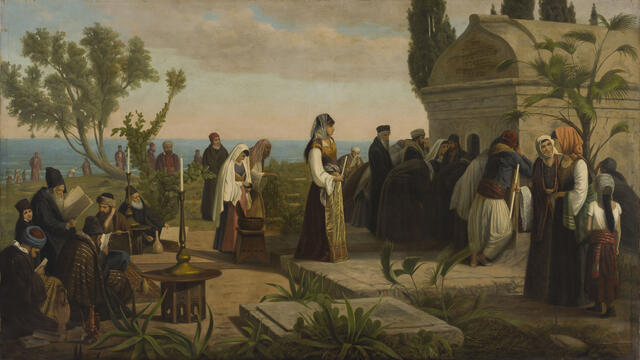European Rabbinic Scholarship
Despite the challenges of the early modern period, rabbinic scholarship flourished in Central and Eastern Europe in the latter half of the eighteenth century and the first half of the nineteenth century.

Rabbinic scholarship stood at the apex of the hierarchy of values of traditional Jewish society. Despite the challenges to its status and the erosion of its authority beginning in the early modern period, it flourished with figures of coruscating brilliance in Central and Eastern Europe in the latter half of the eighteenth century and the first half of the nineteenth century. The period opened with a spectacular controversy when, in 1751, noted rabbi Jacob Emden accused Jonathan Eybeschütz, chief rabbi of Altona-Hamburg-Wandsbek, of secretly harboring heretical tendencies. Eybeschütz was then one of the most renowned rabbinic scholars of his time, author of brilliant talmudic novellae. When Emden accused him of writing amulets that called upon the spiritual powers of Shabbetai Tzvi, heresiarch and leader of a failed messianic movement a century earlier, their clash riveted the traditional Jewish world and provoked interest in the European Christian press as well. Pressured to defend his honor, Eybeschütz reproduced an affidavit from the burial society of Metz attesting to the efficacy of his amulets in reducing the number of Jewish women who died in childbirth.
Other rabbinic figures in this period, such as Elijah, Gaon of Vilna; Jacob Ettlinger in Altona; and Akiva Eger of Posen, commanded the respect of learned Jews across Europe for their mastery of the entire Jewish corpus and their pathbreaking scholarly interventions. They are represented in the Posen Library not by the highly technical works of rabbinic scholarship for which they are best known but by works that expand our understanding of these eminent religious leaders. Far from being rigid and monolithic legalists, as their opponents caricatured them, the rabbis themselves presented multifaceted profiles to their publics. Rabbinic scholarship remained a creative magnet for some of the best minds in the traditional Jewish world. This vitality enables us to better contextualize the ferocity of the polemics in this era. Many of the most important movements envisioned an alternative to the rabbinate as Jewish leadership and to rabbinic scholarship as the apex of valued knowledge.

